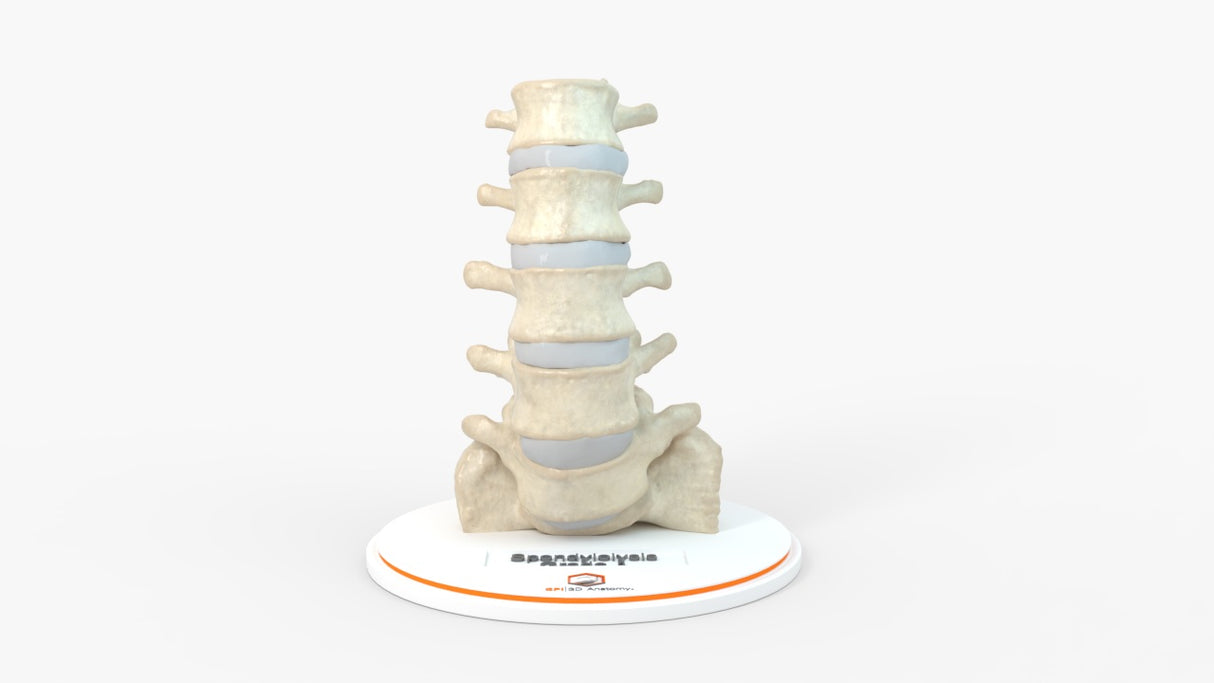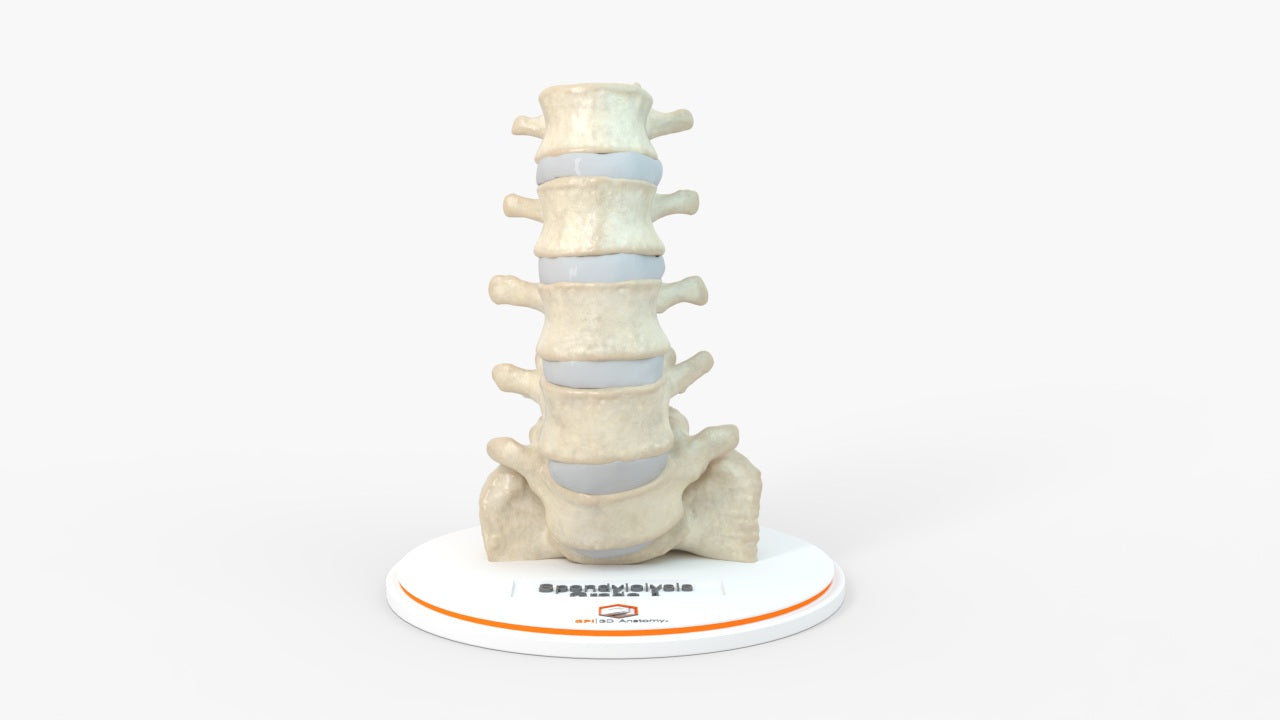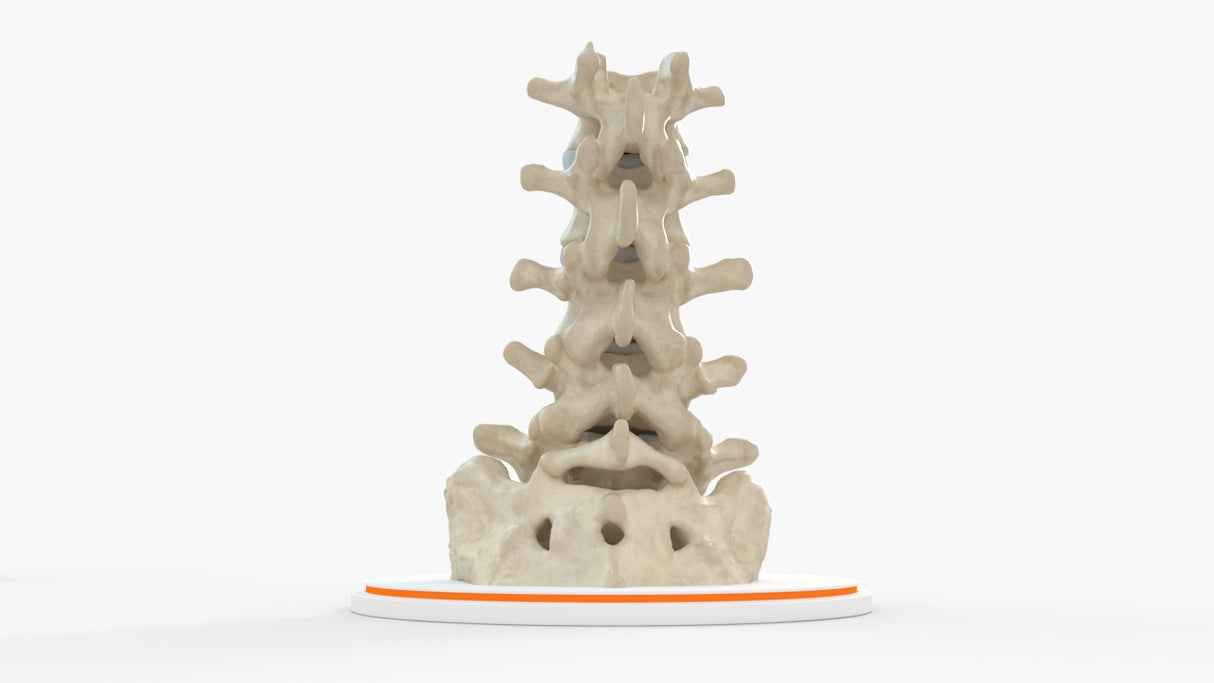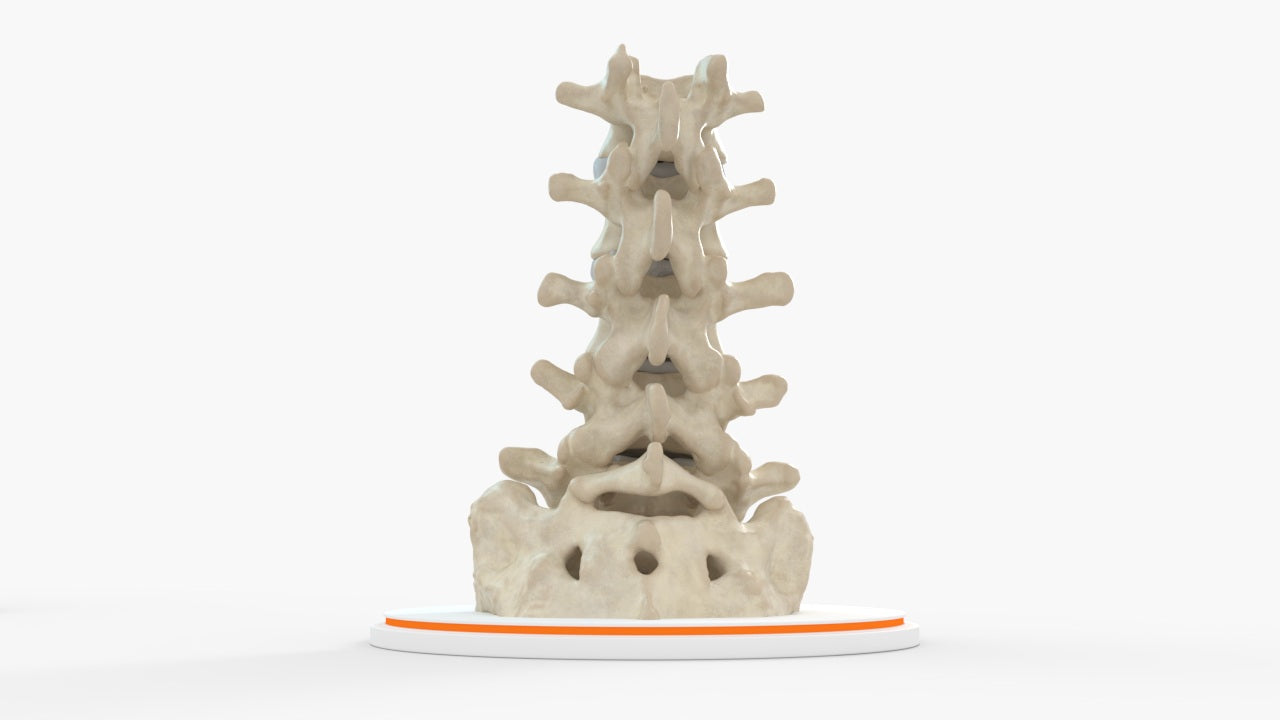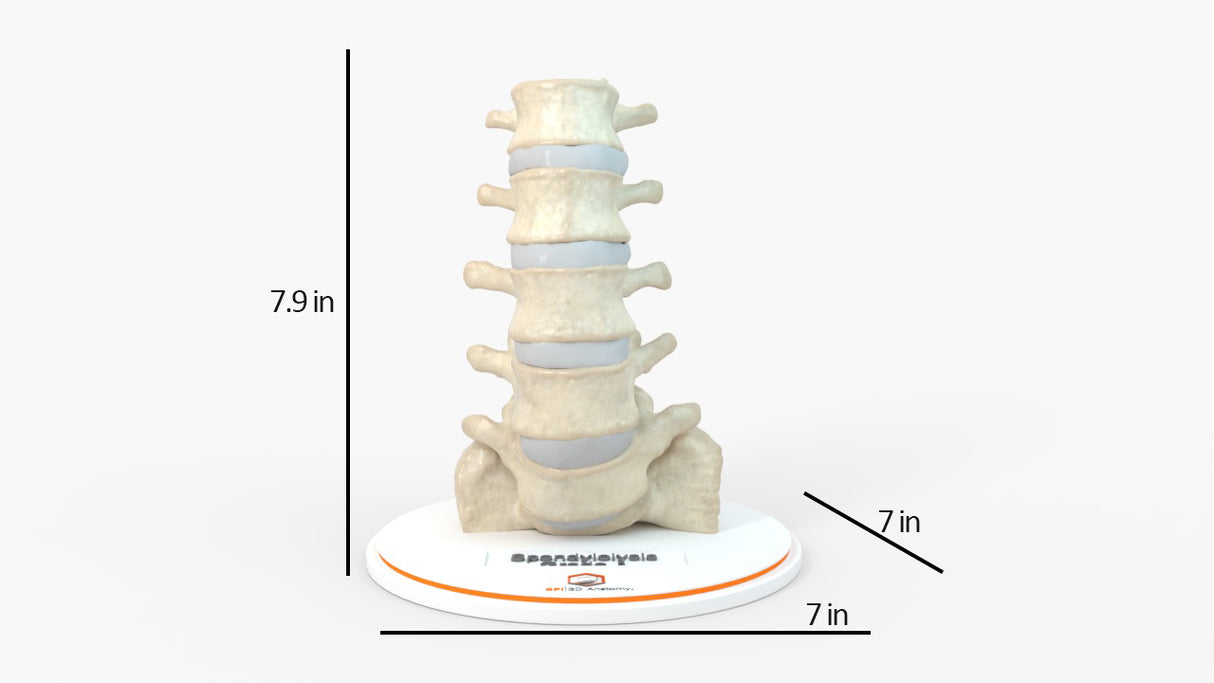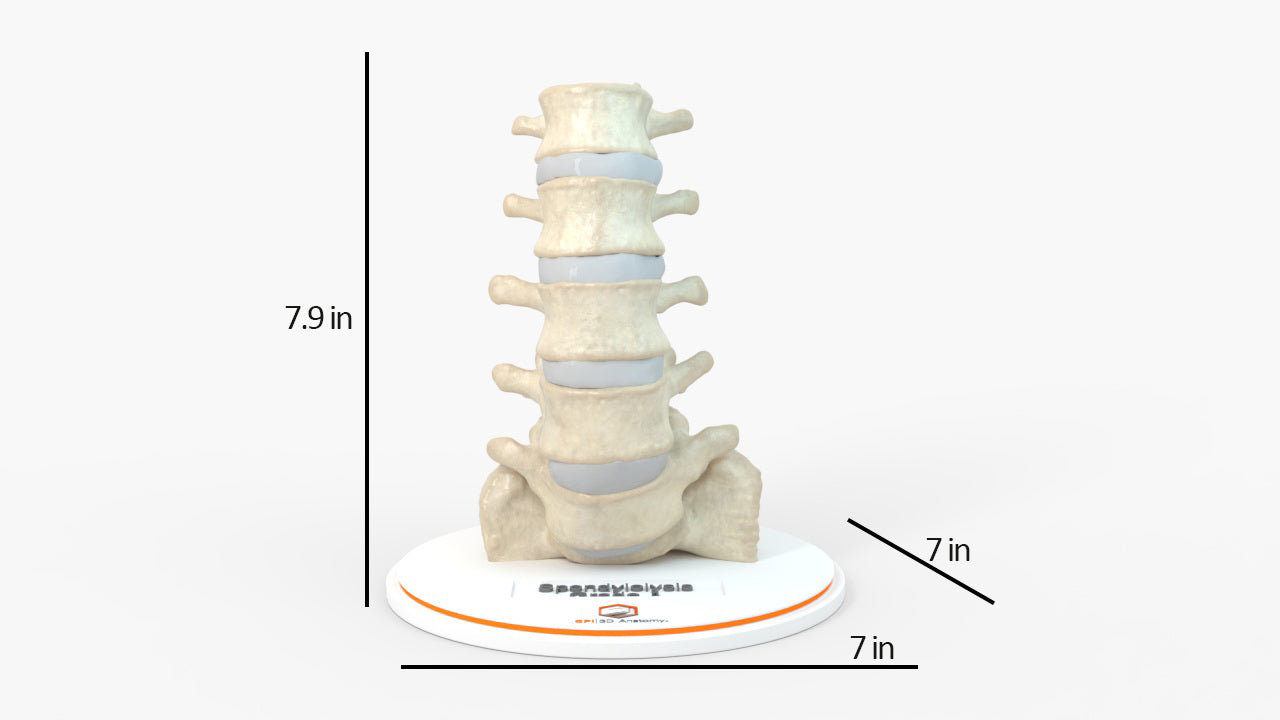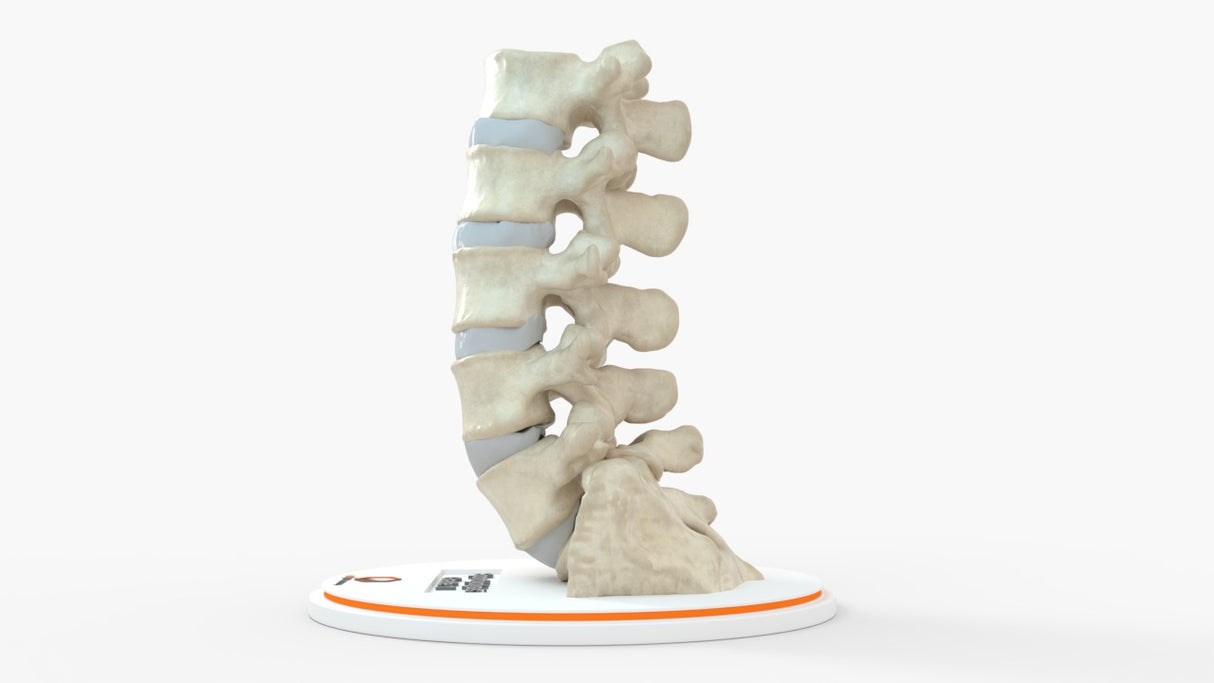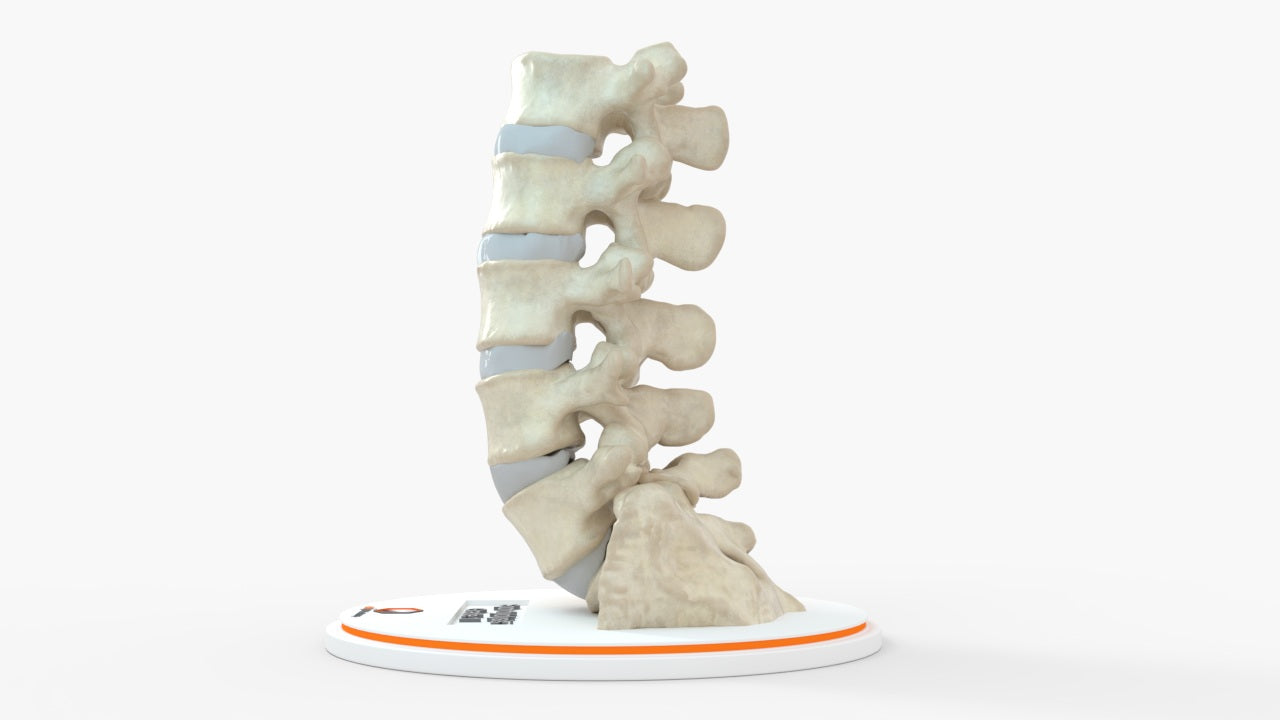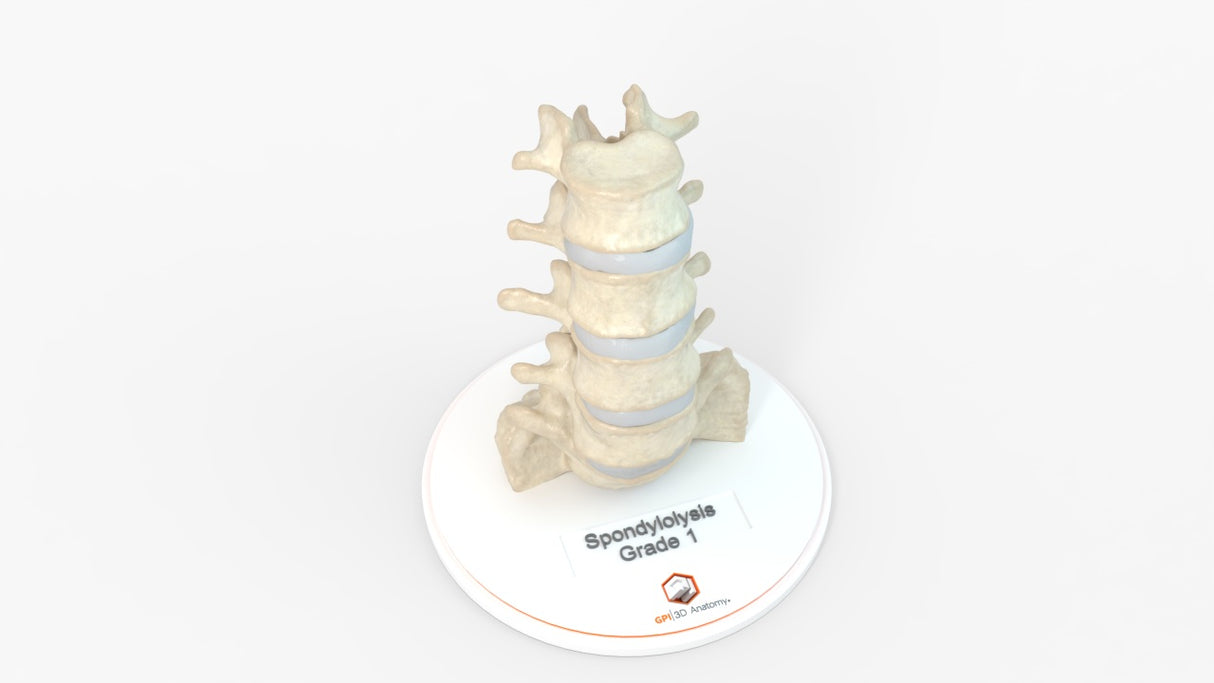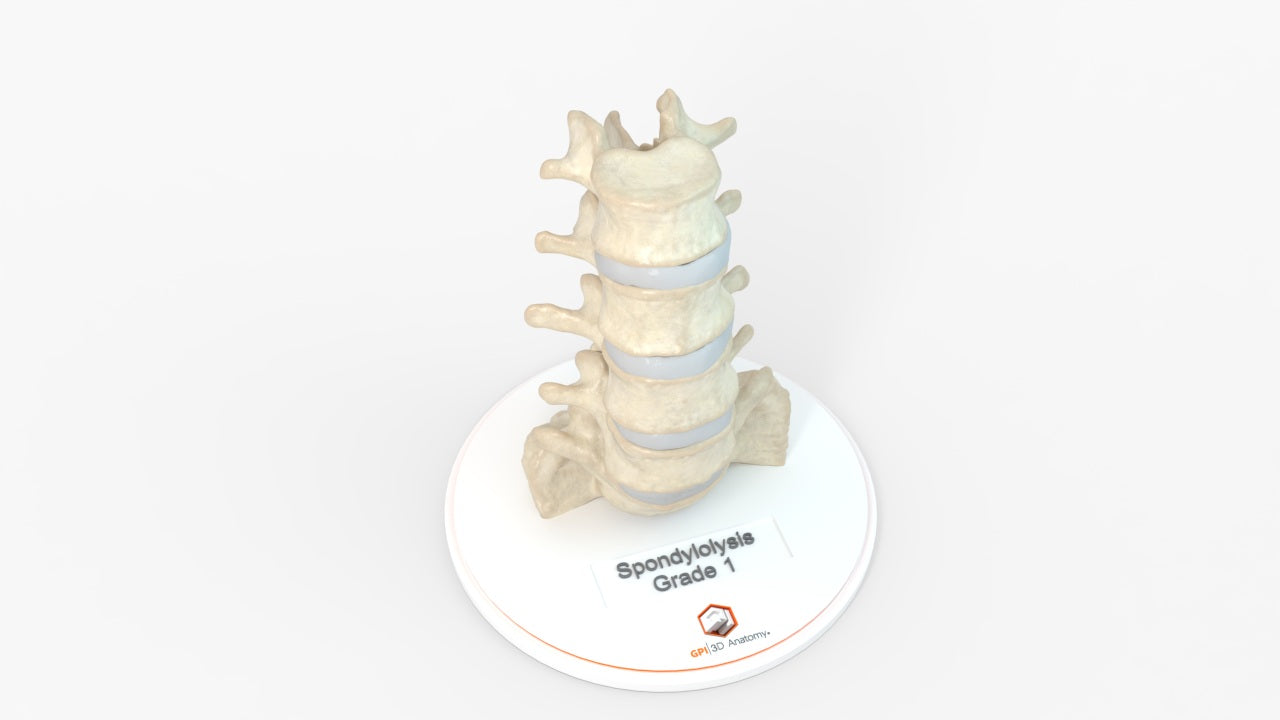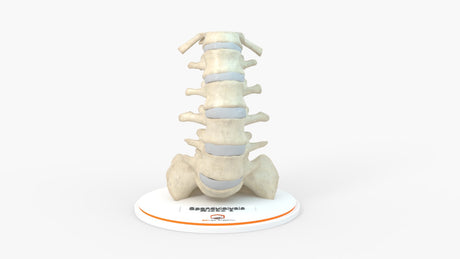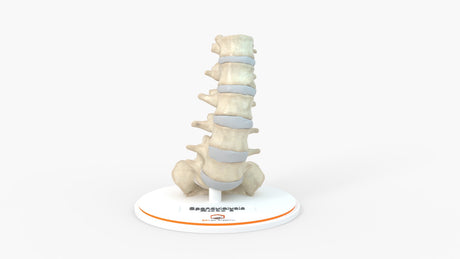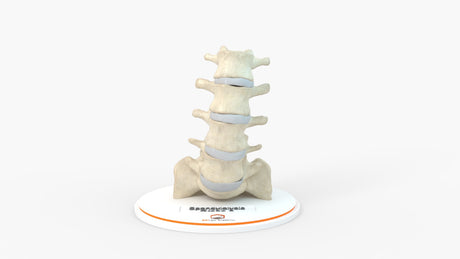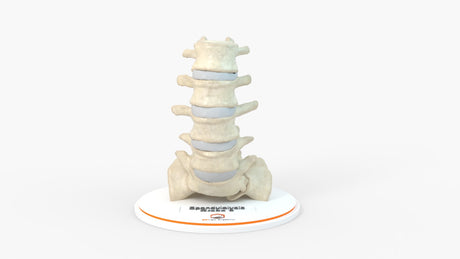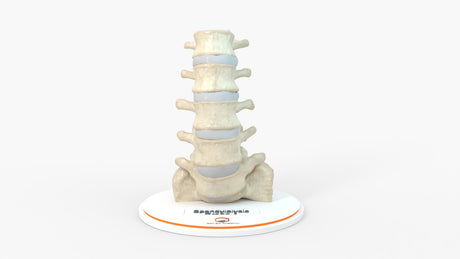Spine With Bilateral Spondylolysis (Pars Defect), Grade 1 – Male, 27 years
Couldn't load pickup availability
Grade 1 bilateral spondylolysis, a defect in the pars interarticularis of the posterior vertebral arch. A common cause of axial back pain in adolescents, especially young athletes, the defect typically occurs in the lumbar spine, most often at L5.
Spondylolysis can persist in some cases to become spondylolisthesis. Typically, the L5 vertebral body slips forward on the S1 vertebral body, but also commonly occurs at the L4 and L5 levels. Patients unresponsive to conservative measures may benefit from surgical management.
Designed using MRI and CT imaging scans and the latest 3D printing technologies, in collaboration with Mayo Clinic.
About the Condition
Benefits of 3D Printing
3D-printed anatomy models offer a variety of advantages for surgical planning, patient education and medical research, including:
∙ Greater accuracy and detail than traditional anatomical models. 3D-printed models are created from digital scans of a patient's anatomy, which ensures that they are as close as possible to an exact replica of real human anatomy.
∙ More versatility than traditional anatomical models. 3D-printed models can be customized to meet your specific needs, whether planning a complex surgical procedure, training with real patient data or facilitating personalized patient communication.
Not limited to standard manufacturing, 3DP provides the best opportunity to produce accurate models in natural organic shapes, sizes, and colors; creating the best representation of real human anatomy.

